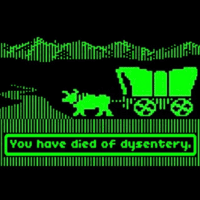
This post was originally published by Stephanie Chacharon on LinkedIn.
Two things are true: I love my work. And I’m an amazing mom.
Those truths don’t have to be at odds with each other. But for me, something’s got to give with the traditional 9 to 5 employment model. If you want to keep me—and the countless others like me—employed, flexibility is a non-negotiable.

At Simplicity, we talk a lot about the current market (unemployment is down! retention is the challenge du jour! talent is in control!) and the realities of the new world of work: the speed of business is faster than ever before; leaders must leverage remote & on-demand experts to reach the full talent pool; and not everyone wants to be your full-time employee. In fact, half of freelancers say that no amount of money would get them to take a traditional job. And with more than 1 in 3 Americans freelancing in 2018, that’s nothing to laugh at. In this landscape, talent is decidedly in charge.
As millennials and gen Z continue to rise through the professional ranks, we’re demanding a new way of working that doesn’t involve being chained to a desk from 9 to 5, working for a company until retirement, pushing papers at a soul-less corporation, or even traveling to an office at all.

But I struggled to find my way back at work after having my kids. It felt truly revelatory when I realized that the rules of employment from my parents’ and grandparents’ generations were starting to erode and that I had the ability to create my own set of rules and requirements. The increasingly more visible examples of women who are dictating their own terms of employment gave me life. My own boss, Lisa Hufford, reminds me that life has seasons and that meaningful work and meaningful time with family can go hand-in-hand.
And at this season in my life, I’m both a marketing leader and a mom of two young boys.
My boys are 5 and pushing 2. The baby, bless his sassy little heart, goes to bed at 6:30pm. That means that if I leave the office at 4:30, sit in Seattle traffic for an hour (please don’t get me started on that!), pick him up at daycare and drive the remaining 20 minutes home, I have approximately 30 precious minutes with him before he goes to sleep. That’s hardly enough time for him to fling spaghetti on the walls and splash around in the tub before getting whisked into his footie pajamas. That doesn’t sit well with me.
Sleep schedules aside, there are doctor appointments and sick days and teacher conferences and school schedules that were not designed for working parents and the list could go on and on and on.
For me to work and mom, flexibility isn’t a nice-to-have, it’s a non-negotiable.
That means some days, I work from home. Usually, I have the house to myself on my WFH days, but sometimes my 5 year-old works next to me with his crayons and those adorably oversized pencils that they user in Kindergarten. Other days, I head into the office and leave by 4:30, but do some of my best, most focused work in the evening after the kids have gone to bed.
I’ve gotten incredibly efficient at working because my time is more precious than ever before. I’m fortunate to work for an employer who has allowed me to build a work schedule that includes days in and out of the office (shout out, Simplicity!) and a husband who's committed to being an equal partner. Working from home means that I get at least two back that I’d otherwise spend cursing in traffic. It means more time focused on work AND more time with my family. If I’m lucky, I might even sneak in a quick run with the dog or get to walk my kindergartener to school.
But it’s not just about being a parent. It’s also about how I work best.
I rely on my WFH days to focus and dig in. Without the distractions of an open office, I have uninterrupted space to make meaningful progress on the tasks at hand. While I enjoy my days in the office, I truly work better from my home office. And tools like Slack, Teams, and Zoom enable me to stay connected with my team while I’m working remotely.
Business leaders, take note. There are millions of people like me—more than 56 million, in fact.
We love our work, and what’s more, we’re good at it! But we also value intangibles like flexibility, remote work, and values-focused employers. If you want us to work for you, we’re going to need a little flexibility. And if you won’t give it to us, we’ll find it on our own.